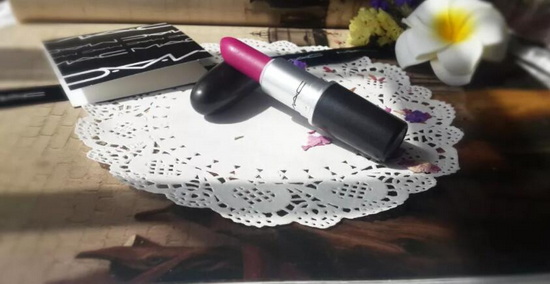
M-A-C Attack
Some of the most successful businesses have been started by unlikely entrepreneurs who happened to have a very clear vision for what was needed and set about to fill that need. A case in point is M-A-C cosmetics.
M-A-C, which stands for ‘Make-up Artist Cosmetics, was started by two Toronto based friends who were frustrated by a lack of high quality make-up needed for use on actors. The Two Franks, as they were known, worked in the Toronto theatre scene. Frank Toskan was a makeup artist and Frank Angel was a beauty salon owner and both struggled to keep actors looking great for a performance due to make-up that melted and faded under the hot, bright lights of the stage. The Two Franks knew what they wanted. They began to experiment with their own make-up concoctions brewing up new creations in their kitchen and tested their brainchild on their actors. The make-up held up under the hot lamps, requiring far fewer touch ups and the colours were vibrant and ‘popped’ regardless of the actor’s skin tone. The actors looked amazing and as word spread about the vibrant, new, heat resistant colors, other make-up artists from both modeling and professional stage productions jumped on board.
Perhaps it was genius, but more likely luck, that the make-up was only available to make-up artists. Many of the models and actors implored their make-up artists to get them some M-A-C to wear on their days off for social gatherings or to go out to a night club. The exclusivity of "M-A-C contraband" drove demand through the roof. Having a M-A-C lipstick in your bag became a status symbol and a treasure to share with your friends. Anyone who knew anyone in the modeling or the theatre industry was begging them to “steal” some M-A-C cosmetics for them.
Even when M-A-C finally became a public brand supply was still limited. The two Franks were savvy enough to open their first store in the high end Toronto fashion district. Early stores were designed to bring a sense of theatre to the purchase experience and the unique colors brought a feel of “outrageous” to the product line. Rather than gifts, gimmicks and heavy sampling that was common in the industry at the time, M-A-C stores were staffed with trained make-up artists; the gift of a professional make up experience for the public. When Madonna appeared in a photo shoot wearing an intense, red matte M-A-C lipstick things took off and when the queen of pop was later photographed sporting a M-A-C t-shirt the brand totally exploded! The M-A-C revolution was on.
What can we learn from M-A-C:
1. Have a very clear vision and a detailed idea of how to bring it about: M-A-C was developed for make up artists of actors and models to solve a very specific problem.
2. Stay true to that vision: Even when M-A-C went public they stayed true to their roots and staffed their stores with make up artists bringing the make-up stage to the public.
3. Exclusivity can drive demand: This is true for both consumer and industrial products and requires discipline in the launch phase.
4. Position with an influencer: All industries have their “stars”. It doesn’t hurt when your product is endorsed by a well known movie star or opinion leader in your industry.
The two Franks were unlikely icons of the corporate world. Yet, with a clear vision and unwavering passion for their industry, they built one of the most iconic make-up brands we know today. There are more than 1500 M-A-C stores worldwide and the brand is still a favorite of models and make-up artists. The two Franks didn’t start out to build an empire – they started out with a passion to make a difference in an industry they loved. What’s your passion and what steps are you and your team taking to make a difference?

 沪公网安备 31011502013770号
沪公网安备 31011502013770号